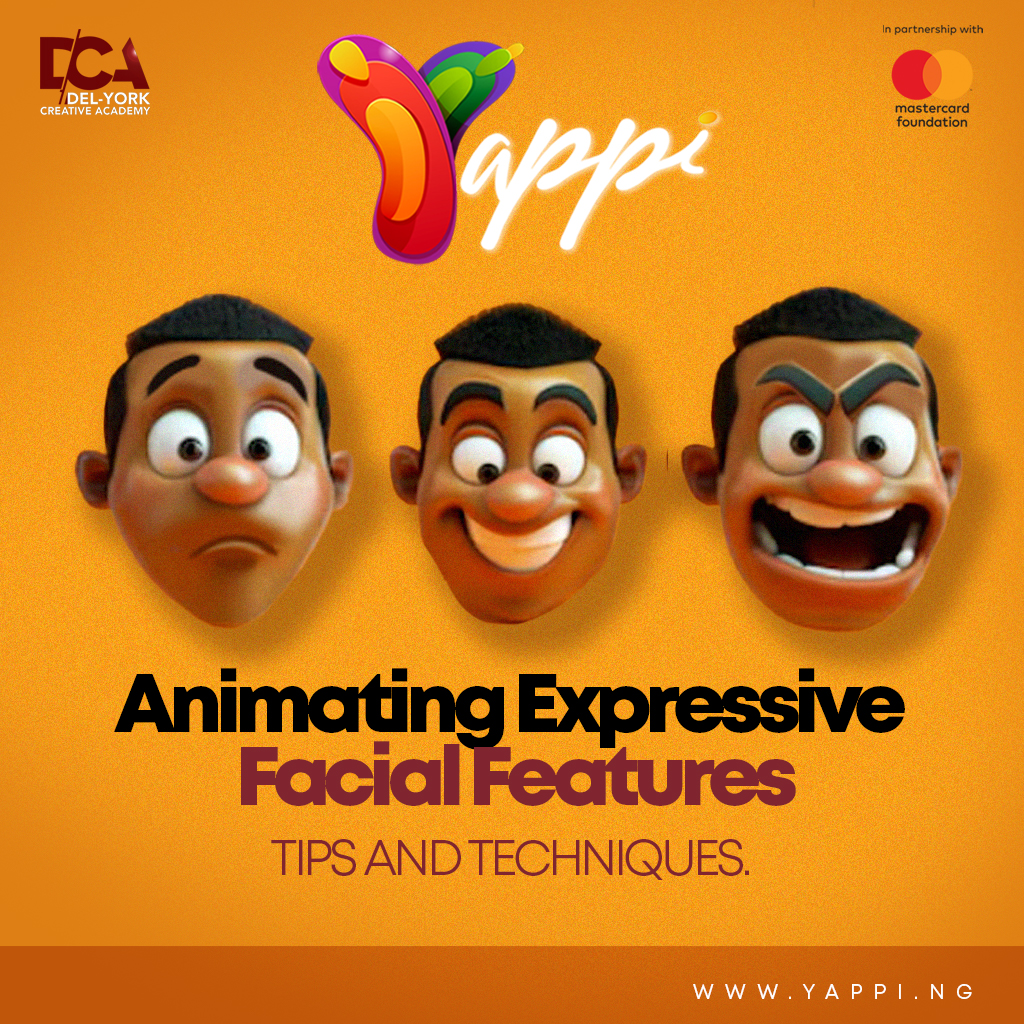Animating Expressive Facial Features: Tips and Techniques.

You had no expression before reading this. A smile, a mischievous smirk with a sly grin, a furrowed brow, or a frown just got expressed on your face. Now, that’s the power of expressive facial features.
In animation, facial expressions are key to conveying emotions and creating believable characters. Have you ever watched a cartoon and felt like the characters were staring back into your soul or giving you some melting chills with a flick of an eyebrow, noses wrinkling with disgust, or the curl of their lips? That’s the real emotional punch in your creations. A well-animated face can tell a story all on its own, making viewers laugh, cry, or feel anything in between.
Let’s explore the tips and tricks to master the art of animating expressive features, from flat to fantastic!
Understanding Facial Anatomy:
Faces aren’t just static masks. They stretch, squish, and morph with every emotion. Before you jump into animation, it's crucial to have a basic grasp of facial anatomy. Familiarize yourself with the muscles that control facial expressions. How do the eyebrows move when a character is surprised? How do the cheeks puff out when they smile? Understanding these underlying structures breathes life into your creation.
Reference Real Faces:
The best way to learn about facial expressions is to observe real people! Ever wondered why cartoons make us laugh, cry, or be angry? Because they are mimicking us! And that’s no surprise. Spend some time watching dramatic movies or TV shows, or even see yourself acting out different emotions. Pay close attention to how different facial features move in conjunction. These subtle movements are the gold nuggets of expressiveness!
Utilize Key Poses and In-betweens:
Key poses are the most extreme points of an expression. In-betweens are the frames that bridge the gap between those key poses, creating a smooth transition. By focusing on key poses that communicate the emotion, you can achieve impactful expressions that don't require animating every single frame.
Exaggeration is Your Friend (Sometimes):
While realism is important, animation often relies on some level of exaggeration to make emotions more readable. Don't be scared to push the limits of a facial expression for comedic or dramatic effect. However, remember that over-exaggeration can sometimes look silly or unrealistic. Use this technique judiciously.
Timing is Key:
Let’s talk about timing, YAPPIans. The speed and duration of an expression play a vital role in conveying its meaning. A slow, lingering smile suggests contentment, while a fleeting grin might indicate nervousness. Slower for dramatic reveals and faster for comedic beats. Choose your preference. But remember, it’s all about creating that perfect rhythm that resonates with the audience. Experiment with timing to fine-tune the emotional impact of your animation.
Secondary Micro-expressions:
Don't forget the backup dancers. Oh yes! The main features, eyes, eyebrows, and mouths get most of the glory. But do not forget the supporting cast! Forehead wrinkles, cheek puffs, a little nose wiggling, head-scratching here and there. Adding these micro-expressions and subtle details creates a sense of realism and depth in your character's performance.
Mirror, mirror on the wall, who has got the best expressions of them all? Nobody but YOU! Always remember that the best reference is yourself. Act out those emotions you want your character to convey, study real faces, watch lots of movies and tutorials to help and use a mirror to capture those fleeting expressions. Just don’t scare the neighbors in the process!
Dear YAPPIans, with a little practice, your characters will have a kaleidoscope of emotions ready to tell their stories and steal the show. The world needs the uniqueness of your touch to create facial features!
YAPPI is rooting for you!
As always, Stay YAPPI!
Powered by Froala Editor
Posted By: Folasola Sodiq
1 month ago